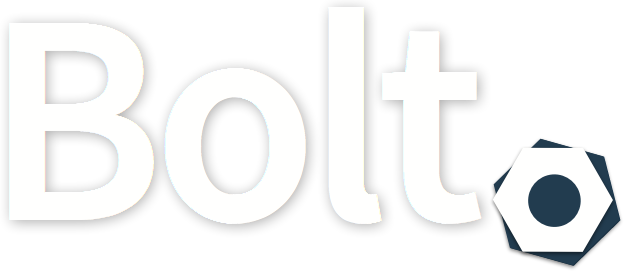Introduction to Laravel
(for WordPress developers)
Slides: bit.ly/2CseAwi
About Me
- I live in Austin with my wife Emily and our cat Banana
- I'm a web developer at ReviewPush (mainly using Laravel)

- I previously worked primarily with WordPress - theme & plugin development
- I enjoy travel, hiking, board games, good food, coffee, and craft beer
- Pretty much everywhere as @dabernathy89
Shameless Plug

Talk Overview
- Framework vs content management system
- Comparison of concepts & architecture
- Sample Laravel application
Framework
- A collection of utilities, usually unified by a defined architecture
- Comes with few to zero user-facing features
- Various methods of extension - packages & service providers in Laravel
- Virtually unlimited flexibility
- Built for developers only
CMS
- A complete application, ready to be used for managing content
- Often built on top of a framework (sometimes part of the CMS, as with WordPress or Joomla)
- Various methods of extension - themes & plugins in WordPress
- Limited flexibility
- Built for developers and/or end users
Framework
CMS
PHP Examples










Laravel Overview
- Created by Taylor Otwell in 2011
- Currently on version 5.5
- MVC-ish style architecture
- Contains a variety of features that can be used to build any kind of web application
- Additional libraries & tools exist in the Laravel ecosystem that aren't bundled with the framework
Laravel
- Simple apps tend to follow Model-View-Controller
- No strict architecture enforced
- Service Container assists with extending framework
- Allows for event-driven code
WordPress
- Event-driven: actions/filters are used both within core and to extend core
- See Tom McFarlin's post on MVC vs event-driven pattern
Architecture
Laravel
- Simple routing system maps URLs to corresponding logic (controller)
- After Laravel maps a URL to a controller, everything is up to the developer
WordPress
- WordPress converts a URL to a query & picks template
- Relies on rewrite rules: regular expressions, modified via filters
- See intro to this Roots.io blog post
- WordPress request diagram
Lifecycle
Laravel
- System for mapping Events to Listeners
- Events hold data; listeners act on Events
- Events can be `dispatched` from anywhere
- Events can easily be queued
- No equivalent of WordPress filters
- Available but not required
WordPress
- Hooks: actions and filters
- Actions trigger custom code and pass data
- Filters trigger custom code, pass data, and receive data back
- Synchronous
- Essential to WordPress development
Events vs Hooks
Laravel
- Entities typically represented by Eloquent Models
- Columns / properties entirely up to developer
- Models can have various relationships with other models
- Eloquent lets you easily query data, including related entities, and filter/paginate
WordPress
- Many entities are built-in to WordPress (users, posts, pages, menu items, images, etc)
- Custom entities tend to be Custom Post Types
- WP Query is used to easily query data and filter/paginate
Eloquent vs WP Query
Laravel
- Tool for building and processing simple to complex SQL queries
- Often used in conjunction with or instead of Eloquent
- Eloquent extends the Query Builder
WordPress
- Relatively simple class for running queries directly against database
- Developers encouraged to use WP Query instead when possible
Query Builder vs WPDB
Laravel
- Custom templating language similar to Twig, Mustache
- Data is generally fetched in controller and passed to template
- Developer determines which view (template) to load
- Highly modular
- Only has access to data passed to it
- Structured outside --> in
WordPress
- Plain PHP
- Data is generally fetched inside the template ("The Loop")
- WordPress determines which template will be loaded; can be altered via hooks
- Can be modular
- Global scope
- Structured top --> bottom
Blade vs Template System
Laravel
WordPress
Other Similar Features
| Cache Artisan Console User Authentication Gates / Policies Task Scheduling Localization |
Transients API / wp_cache WP-CLI User Authentication Roles & Permissions wp_mail WP Cron I18n / l10n |
|---|
Some Unique Laravel Features:
- Middleware
- Collections
- Validation
- Broadcasting (websockets)
- Queues
- Filesystem
- Migrations / Seeding
Some Unique WordPress Features:
- HTTP API
- Metadata / Options
- Settings API
- Menu System
- Media Library
- Widgets
- Various other CMS features
Sample Application: TodoMVC Back End
The TodoMVC project is a specification for a simple front-end application which can be written using various different JavaScript frameworks.
We're going to look at how we could use Laravel to handle persistence of TodoMVC data.
The back-end is simple: it needs to be able to create, read, update, and delete Tasks from the database.
Introduction to Laravel for WordPress developers
By Daniel Abernathy
Introduction to Laravel for WordPress developers
This talk will introduce WordPress developers to Laravel, one of the most popular PHP-based frameworks today. We will discuss the differences between a framework and a CMS generally, the features that Laravel offers developers, and the architectural differences between WordPress and Laravel. We’ll also examine a small demo application built in both WordPress and Laravel.
- 1,915



